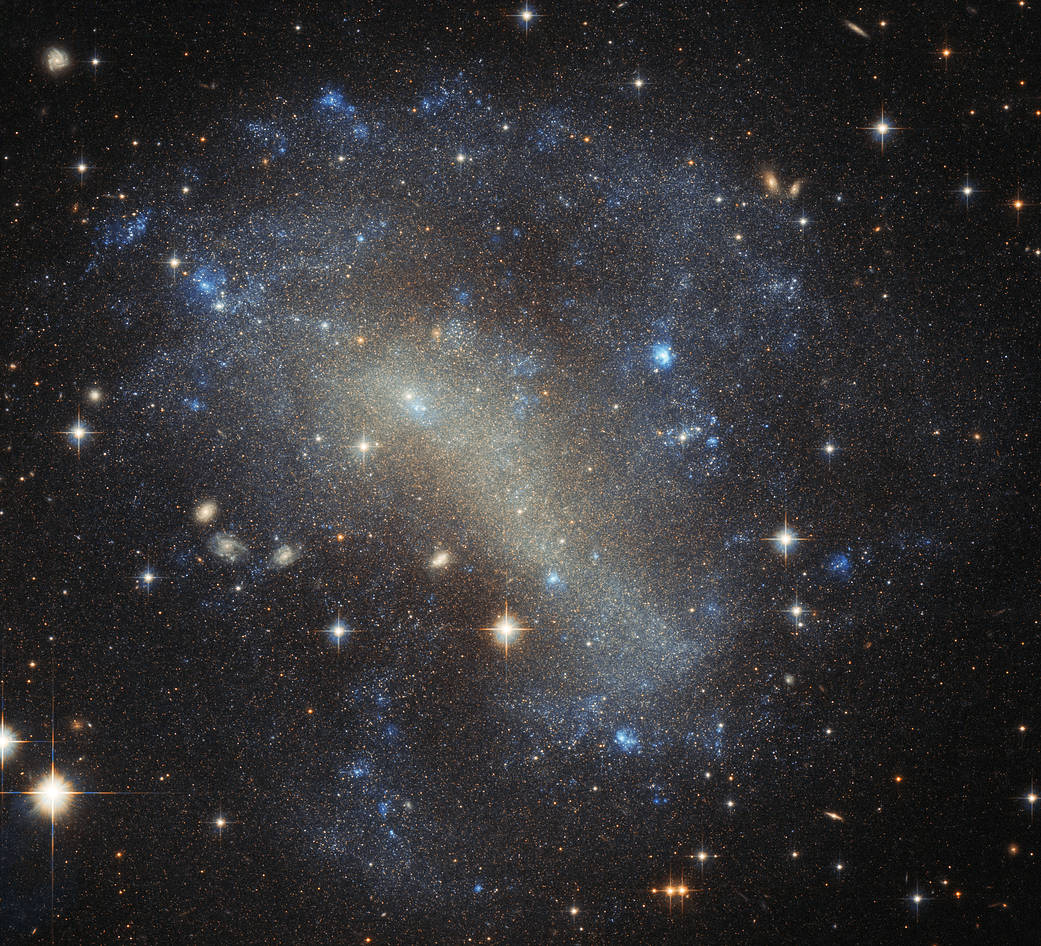Chaotic, Shapeless Galaxy Glitters in Dazzling Hubble Telescope View

In the far reaches of the constellation Pavo, the peacock, the dwarf irregular galaxy IC 4710 glitters brilliantly with colorful stars. This shapeless blob of a galaxy is home to many clusters of bright, blue newborn stars, which form in pockets around the outskirts of its cloudy, yellow-white core.
Discovered in 1900 by astronomer DeLisle Stewart of Harvard College Observatory, this small galaxy lies 25 million light-years from Earth. The Hubble Space Telescope captured this view of the galaxy using its Advanced Camera for Surveys.
Dwarf irregular galaxies like IC 1470 have a "chaotic appearance, lacking central bulges and spiral arms," officials from the European Space Agency (ESA), which released the photo Feb. 26, said in a statement. "They are distinctly different from spirals or ellipticals." [Infographic: How Galaxies are Classified by Type]
Experts think this strange, deformed galaxy may have once been a more typical galaxy that morphed due to interactions with other galaxies, ESA officials said. Scientists also suspect that these unique figures, which may make up as much as a quarter of all known galaxies, may resemble the first galaxies in the universe.
The Pavo constellation also contains several other notable elements: NGC 6752, the third-brightest globular cluster in the night sky; NGC 6744, a spiral galaxy and Milky Way look-alike; and six star systems that are known to host exoplanets. One of these systems, HD 181433, hosts a super-Earth.
Follow us @Spacedotcom, Facebook and Google+. Original article on Space.com.
Breaking space news, the latest updates on rocket launches, skywatching events and more!

Christine Lunsford joined the Space.com team in 2010 as a freelance producer and later became a contributing writer, covering astrophotography images, astronomy photos and amazing space galleries and more. During her more than 10 years with Space.com, oversaw the site's monthly skywatching updates and produced overnight features and stories on the latest space discoveries. She enjoys learning about subjects of all kinds.
